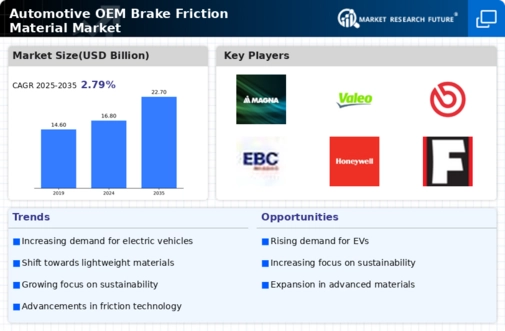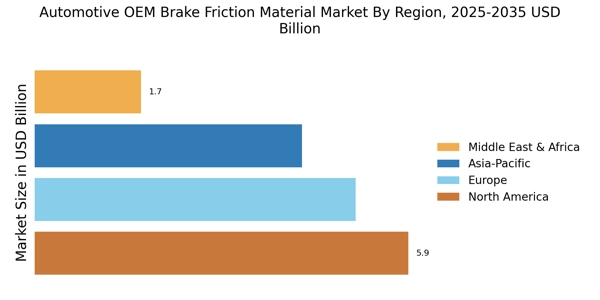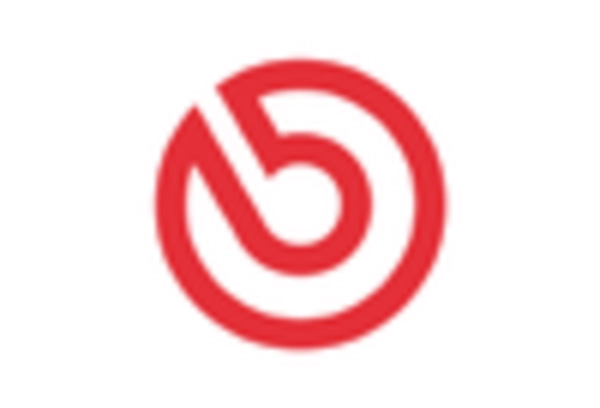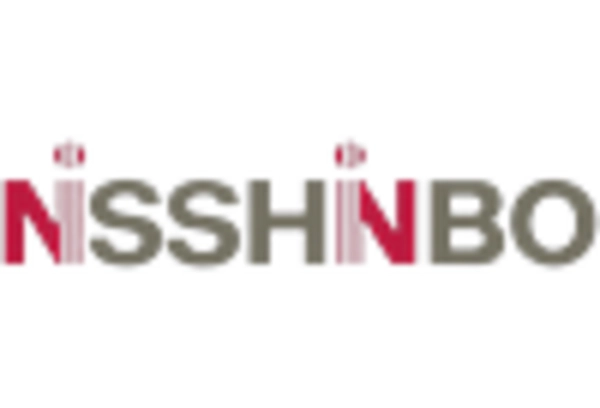Automotive Oem Brake Friction Material Market Summary
As per Market Research Future analysis, the Automotive OEM Brake Friction Material Market was estimated at 16.75 USD Billion in 2024. The Automotive OEM Brake Friction Material industry is projected to grow from 17.22 USD Billion in 2025 to 22.67 USD Billion by 2035, exhibiting a compound annual growth rate (CAGR) of 2.79% during the forecast period 2025 - 2035
Key Market Trends & Highlights
The Automotive OEM Brake Friction Material Market is poised for growth driven by sustainability and technological advancements.
- North America remains the largest market for automotive OEM brake friction materials, reflecting a robust demand for safety and performance.
- The Asia-Pacific region is emerging as the fastest-growing market, propelled by increasing vehicle production and urbanization.
- Non-Asbestos Organic materials dominate the market, while Semi-Metallic materials are gaining traction due to their performance benefits.
- Key market drivers include the rising vehicle production and a growing focus on safety features, particularly in the passenger car segment.
Market Size & Forecast
| 2024 Market Size | 16.75 (USD Billion) |
| 2035 Market Size | 22.67 (USD Billion) |
| CAGR (2025 - 2035) | 2.79% |
Major Players
Brembo (IT), Bosch (DE), Akebono Brake Industry (JP), TMD Friction (DE), Federal-Mogul (US), Nisshinbo Holdings (JP), Hella (DE), Miba AG (AT), SGL Carbon (DE)


















Leave a Comment